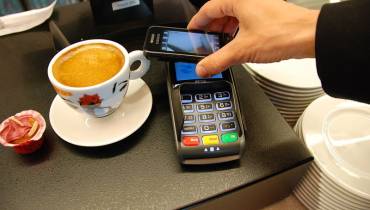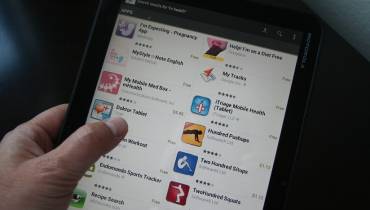Top Tips to Write the Perfect Cold Email

A cold email is sent to someone that you either want something from, or that you want to do something for, such as sign up for your newsletter or buy your product or services. And cold emailing works.
How you introduce yourself matters a lot too in any type of communication, per Karen Gross of the Aspen Institute. This is especially important when writing a cold email since it is written to someone you do not have a prior relationship with.
If you want to craft a winning cold email that convinces people to act in the way you want, make sure your first impression is a good one. But that is not all. There are other essential tips proven to help you create the perfect cold email.
Keep reading for top tips about cold emails.
General Tips to Write a Cold Email
Since cold emails are written to someone who likely doesn't recognize your email address, you need to craft your subject line in a way that makes a connection. Otherwise, they probably won't even open it.
Your subject line is all you have to get them to open it. So, tell them something they want or need to hear. Give them a tidbit of relevant, timely or useful information.
Or briefly explain a benefit or desire you will provide for them.
Avoid any terms that might sound spammy or otherwise manipulative, such as "Free", "Limited Time Offer", or such common phrases used for sales letters.
Other tips for writing a cold email can also vary depending on who you are writing to. Such as:
- Is it to a specific person for a specific reason?
- Is it to a group of people who are in your target market?
Tailor your message according to the recipient of your email.
Below are specific tips for cold emailing a specific person and a group of people.
Tips and Best Practices for Cold Emailing a Specific Person
When you need to write a cold email to a specific person that you do not know, it can be a little more intimidating since it is more personal. As you would in face-to-face meetings, you could add their name in as part of your subject line.
Prior to composing your email, first get a clear picture of who you are writing to, why you are writing to them, and what you want or need from them.
1. Mention Any Ties to This Person
Start your email by explaining why you are writing specifically to them.
Perhaps you have a friend, relative or business associate who knows them. Or do you have things in common? Perhaps a hobby, sport, or organizational affiliation?
If you do, make this the first thing you say when you begin your email.
2. Explain Who You Are
Since you are cold emailing, tell the recipient who you are. Not just your name. Give them the info they need to figure out if you are someone they want to help or whether you are someone they want to do business with.
What you say about yourself will depend on why you're writing them. Things that may be important:
- Where you currently work
- Organizations you work with
- Educational or employment background
- Any other info to help them connect you as a person with the reason you are writing them
3. State It If You Have Something to Offer Them
People are more likely to help you if there is something in it for them. Based on the Norm of Reciprocity, if you give someone something, they are more likely to want to give back.
For instance, if you discovered that on the recipient's social media that they are looking for help with something particular, offer to help them or refer them to someone who can.
If you will be referring them to someone specific, give the person or businesses name and explain why that person/business can solve their problem and offer to introduce them.
4. Tell Them Why You Are Writing to Them
Now is the time to let them know your call-to-action (CTA). This is what you want or need from them. Keep it as brief as you can, but also thorough.
Do you want them to introduce you to someone? Say so, and explain why.
Do you want them to meet you to discuss your business? Say so, then give them a couple of dates/times. Leave it open by asking them to suggest another time that works for them, if the times you provided are not good for them.
No matter what you want them to do, just remember to keep it simple. Ask them to do just one thing.
5. Say Thanks in a Meaningful Way
Express your thankfulness to them in a way that makes it clear you appreciate their time, whether they do what you are requesting of them in your email or not.
A simple "Thanks" or "Thanks in advance" doesn't cut it. Say something more concrete, such as "Thanks for considering my request. Your time is appreciated."
Tips and Best Practices for Cold Emailing a Specific Target Market (or Lots of People)
Much of the above advice can apply when sending cold emails to your target market. But since these types of emails are not quite so personal, you can tackle them in a more straight-forward way.
One of the most used methods in copywriting is known as A-I-D-A. It works very well for writing cold emails.
1. Attention
After completing research into your target market, you should have a good idea about their interests, fears, passion, and problems.
Pick one of these to get your reader's attention, making sure you can relate it to your product or service.
2. Interest
To get your prospect excited about your product or service, tell them how the features will solve one of their problems.
Will it alleviate a fear?
Will it solve one of their problems?
3. Desire
By being specific about the benefits your prospect will receive, you will increase their desire. Give them the facts and details.
Explain all the ways your product or service will fulfill their need.
A couple of the ways you can do this are by telling them how it will make them feel or providing before-and-after shots.
4. Action
Inspire them to take action. This can be to sign up for your newsletter, buy your product/services, or whatever it is you need them to do.
Some of the ways to get them to take action are to inspire their fear of missing out,
After You Send a Cold Email, Prepare to Follow Up
Even before you send out cold emails, you should have a follow-up plan in place for what you will do next. Such as, will you phone them or send another email?
If you plan to use emails as your main communication strategy, considering using a service such as Mailchimp to help you manage your email campaigns.
Conclusion
Use the tips above on your next cold email for best results. By following the tips, sending out cold emails can become more effective and you could be in talks with new customers and clients in no time at all!




















